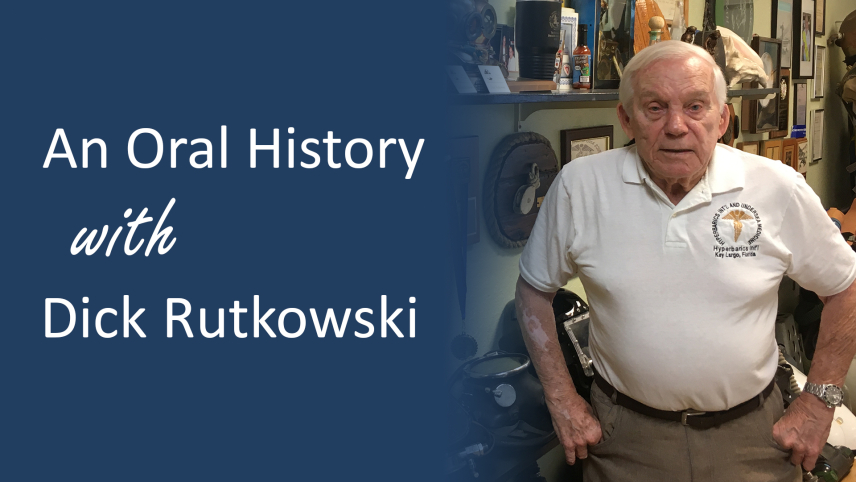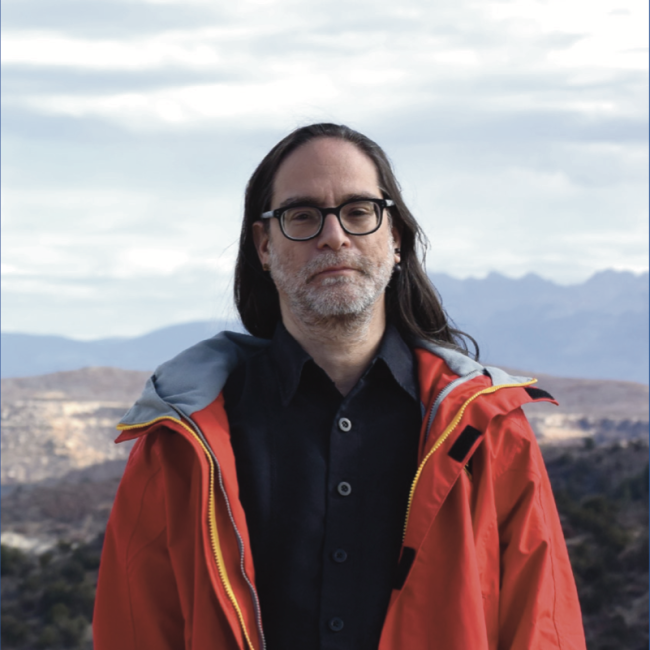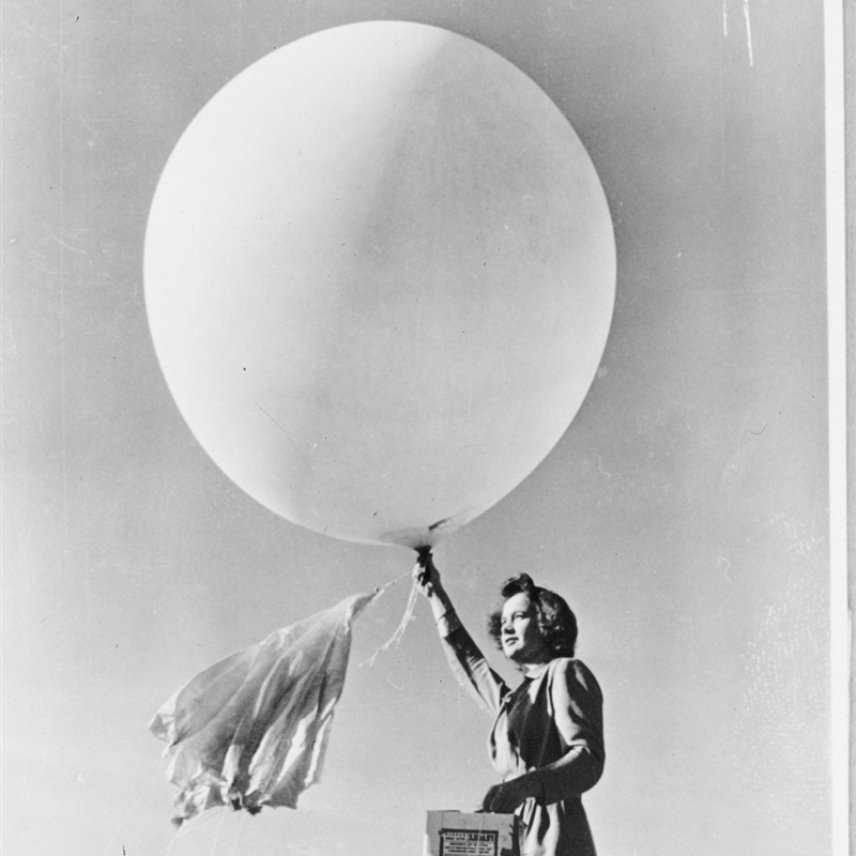This oral history was conducted by Molly Graham in 2020 as a part of the NOAA 50th Anniversary Oral History Project.

Tenure at NOAA: 1970-1985
ESSA, NOAA’s predecessor agency:1965-1970 (Image credit: NOAA Heritage)
In 1973, there were no hyperbaric chambers anywhere in South Florida for treating recreational divers with decompression sickness, so Dick Rutkowski set out along with a local dive club to find one - and, they got it. He came back from a scientific mission one day to find a chamber sitting in the yard of his office at NOAA’s Atlantic Oceanographic and Meteorological Laboratory in Virginia Key, Florida. Rutkowski used that chamber to start a hyperbaric facility at NOAA, which served as a catalyst for years of development of NOAA’s Diving Program under Rutkowski and his mentor Dr. Morgan Wells.
Rutkowski is considered a pioneer of hyperbaric medicine and dive training. Besides serving as deputy coordinator of the program and director of dive training, he led NOAA’s hyperbaric treatment facility from 1973 until his retirement from NOAA in 1985, treating hundreds of divers. He has stayed active in the international dive and hyperbaric medicine communities since then, most notably through his involvement in training physicians in a diving and hyperbaric medical training program.
Rutkowski has received accolades from the dive community, but there is one notable, icy exception: a glacier in Antarctica named after him.
Hear a snippet of the interview recorded on January 5, 2020 in Key Largo, Florida:
Listen to the full interview with Dick Rutkowski.
Transcript:
On working in Antarctica and the Arctic, prior to becoming a diver:
MG: Tell me again about Byrd Station.
DR: Okay. So I was assigned to Byrd Station – twenty-four personnel, twelve scientists and twelve Seabees. All of our equipment was continued, dropped by C-124 Globemasters. Those were all prop planes. We’re talking the old days now. Everything was leftover from World War II type stuff. So, after doing a year there, I had nothing to do because there was never any ionosphere, any way to get communications or anything else. So the back end of my radio shack in Antarctica, I started sitting back there with the meteorological people. In doing so, I began to pick up their meteorological stuff, and I started to learn some of the meteorological technician stuff. So by the end of the year, I was doing their work. They were sleeping, and I was sending up the balloons and the radiosondes and everything else.
So the guy in charge did get me a job then with the Polar Operations. As a meteorological radio operator technician, I then went to the Canadian Northwest Territories, as you can see there. My first station was about three hundred miles from the North Pole – twelve-person station. Twelve. Can you imagine? Twelve people living three hundred miles from the North Pole? The daylight was just like a twenty-four-hour day here for the year. Four [months] of dusk, four [months] of light, four [months] of dawn – I mean, four months of this, and this, and this. Right? So I spent a year there. Then I went back because I liked New Zealand. I went back through New Zealand to go to Antarctica again. Then I went to the Pole Station right there at ninety south. See, that’s me up there at ninety south at the pole. So nowadays, everybody says, “I’m going to the South Pole.” Well, they’re not going to the South Pole unless they go to the South Pole and touch that pole. Otherwise, they’re going to Antarctica. So there’s quite a difference. So then I went back and forth for five and a half years to the Arctic and Antarctic stations. So that took me up to about 1963, but then I got out. I went in as a meteorological technician for ESSA, the Environmental Science Services Administration because the government being nice wanted to keep me in the government, I guess – not to throw me out – as a meteorological technician. Anyway, little things began to happen. About 1967, I then went to commercial diving school.
Everything in those days was back with the big old Mark V helmets stuff. I was directed to go to diving school because a lot of scientists were jumping off the ships and trying to do diving, and they didn’t know what they were doing. So when I came back then, I started running these diving classes. Remember, I was still in ESSA because the NOAA acronym had not come about until 1970. So I was running classes for government agencies and state and local police departments – diving classes and different things.
On establishing a hyperbaric treatment facility for NOAA:
DR: Eventually, all of South Florida was without a recompression chamber. In 1970, the Navy closed down their chamber in Key West. There were no other chambers available, especially for the recreational diving community from all of South Florida through the Caribbean, Central and South America. So I was directed then by Dr. Harris B. Stewart of AOML [Atlantic Oceanographic and Meteorological Laboratory] because that’s where it was housed, with AOML, on Virginia Key. He told me to work with my Navy buddies – because I was already teaching a lot of Navy divers and so on – to see about getting a chamber for the South Florida area.
So I was out on a cruise, but when I came back from a cruise one day, the chamber was sitting in the yard. This is out of the Fisheries - is where the chamber was eventually put. When I came in, everybody there was saying, “What the hell is this thing?” I said, “Well, that’s a recompression chamber.” Most of the employees [said], “What are you going to do with that?” “Well, we’re going to treat divers.” “What do you mean you’re going to treat divers? You can’t do that. You’ll kill everybody.” Of course, with volunteer help – that chamber was set up with volunteer help and volunteer money from the community. The reason it was so aggressively pushed was because the DIGA Dive Club in South Florida, they were very concerned there wasn’t going to be any chamber available. So they contacted Harris B. Stewart because of me – I directed them to him. That’s how the chamber got delivered to AOML, Virginia Key. Then, eventually, over to Fisheries because one of my buddies managing the Fisheries said, “You can house it under here.” So that’s where we put it.
After the chamber arrived, of course, and after – but the beginning of having the chamber on Virginia Key, Miami, was all credited to the DIGA Dive Club. We formed an organization called the Florida Underwater Council, which I was the president of, by raising community funds. All the money was raised to establish the chamber, even to build in the walls and so on. We had lawyers and bankers and everybody else helping us put that place together. So eventually, we did. The first case that came in, I believe, was one of the worst cases we had of all of the probably 10 years that I’ve worked and been the director of that facility. One came flying in on a helicopter, landing in the parking lot at the Marine Fisheries, boy, in between the cars. I couldn’t believe it. These young Navy pilots coming in from Vietnam. They scared the hell out of me when they started landing on our parking lot in the Fisheries. But that was one of the worst cases we ever had because it was a PhD-type of an individual, who was the director of a nursing college somewhere up in Chicago. He had a bunch of nursing students with him. He evidently came up, holding his breath, and he was very unconscious. They kept him alive on the boat. They had the Air Force base in Homestead, Florida fly him up to us. We got him into the chamber. After a few treatments, the guy went on to live, and he went on to do very good. So that was a very exciting event for all of South Florida because it was in the newspapers and everything else. Because it had such great notoriety for NOAA, NOAA couldn’t possibly give me enough money after that. They always wanted to know, “Okay, what can we do for you?” So that place kept existing to go on.



